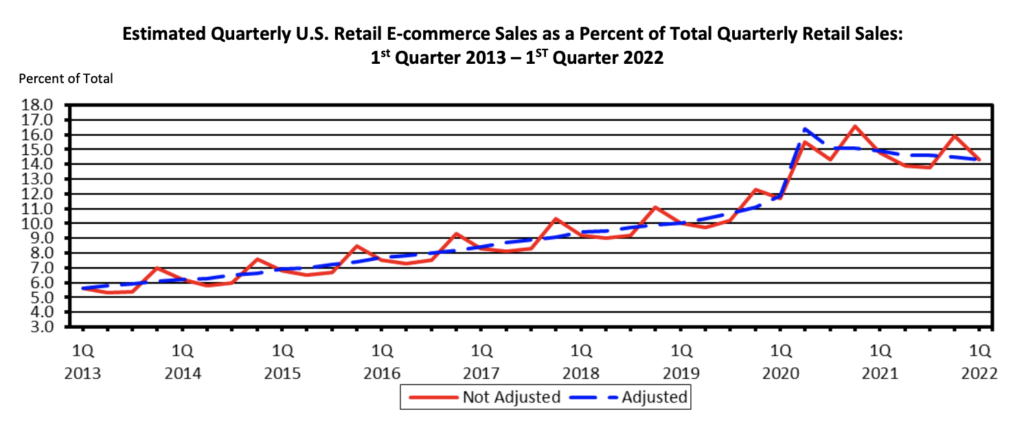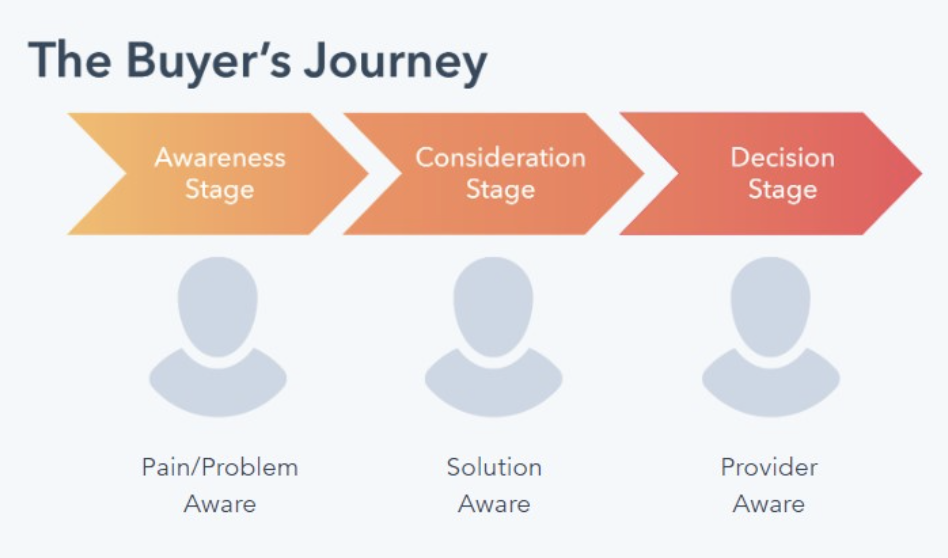Healthcare buyers are turning to the internet to research and buy products more than relying on a sales agent. To keep up with this change in customer behavior, healthcare manufacturers must use content marketing for purchasing.
Let’s look at healthcare content marketing for purchasing and how to create copy that converts in 2022.
Key Takeaways:
- E-commerce shopping and online product research are on the rise in the healthcare industry
- Content marketing for purchasing is content created for every stage of the buyer’s journey
- Optimize your content to ensure it appears during buyer searches to increase your conversions
Healthcare Marketing Isn’t the Same as it Was Several Years Ago
Healthcare marketing has looked the same for several years. Sales agents would bring products from the manufacturer to hospitals and healthcare facilities. In return, the healthcare workers would contact their sales agents when they ran low on supplies.
That pattern has shifted.
Today, 94% of buyers turn to the internet for information on new products or ordering fresh supplies. In addition, 90% of healthcare equipment buyers find their suppliers online.
Your buyers aren’t relying solely on your sales representatives anymore for information. Instead, they are increasingly going online to research options for themselves.
What Caused This Shift?
The internet is home to an ocean of information. Because of the accessibility of research, reviews, and industry data, buyers no longer rely on a middleman for information. Now they can find facts and data for themselves.
Consumers like having the ability to research their options and understand the market. It helps them make the best decisions based on their needs and budget. They can also buy with more confidence because they have reviews and data to back their decisions.
Is the Change in Buyer Behavior Permanent?
Ecommerce is booming, partially due to changes that COVID brought about in consumer behavior. People are looking increasingly to online options for their needs, even medical facilities.
With the increase in online shopping options comes an increase in online data. Consumers can view more information about different products, features, prices, and reviews.
The upward trend of e-commerce shows no sign of slowing. Most customers prefer online shopping because of its convenience, including more options, easy delivery, and quick checkout options. While traditional sales methods still have their place, e-commerce research and shopping are now a permanent fixture in healthcare buying.

How You Can Use This New Buyer Behavior to Your Advantage
More healthcare buyers going online for their research and product needs means you have a wider audience and can reach more potential buyers with your marketing content. You aren’t limited to those that your sales representatives can reach.
About 94% of B2B marketers plan to develop a content marketing strategy. Content marketing brings in three times more leads than outbound marketing strategies.
You can offer relevant information for every buyer’s journey stage through content marketing. For example, as consumers in your industry research their options, you can position your content at the top of their search results or in their social media news feed.
Strategically placing your content across the internet at critical points in the buyer journey ensures customers find your brand sooner and increases the likelihood of them choosing your products over a competitor’s.
How to Perform Content Marketing for Purchasing
These five content marketing strategies will optimize your content for purchasing.
1. Understand Buyer Intent
Buyer intent is how close a buyer is to purchasing your products. You can find buyer intent by tracking customer behavior on your website. This alerts you to patterns in customer behavior that often precede a purchase.
You can also buy intent data from third-party companies. This purchased data gives you a broader picture of buyer behavior.
Intent data helps you reach customers earlier in the buyer journey and identify the highest quality leads. It’s an essential component of a content marketing strategy that converts customers as these insights alert you to those buyers in the research and buying stages.
2. Consider All Stages of the Buyer’s Journey
Content marketing for buyers isn’t just about conversion copy. It requires the full content marketing funnel. About 83% of the customer journey occurs before they are ready to buy. This period is that essential research stage that modern healthcare buyers now perform online.
Your content marketing strategy should address buyers at every stage of the awareness, consideration, and conversion funnel. Some examples of a content you can create for your buyers to aid in their research and decision process include:
- Awareness: Demand generation content, educational content, lead generation content
- Consideration: Nurturing campaigns, more insightful educational content
- Decision: Customer testimonials, frequently asked questions pages, conversion copy

3. Strategically Distribute Your Content
When you relied on sales agents to distribute your products, you sent those representatives to healthcare facilities to educate buyers and sell products. Content marketing works similarly. Except, instead of physical sales representatives going to healthcare facilities, your content acts as your agents, and it goes to where your buyers frequent.
Some typical content buyers interact with during the research process include:
- Google search engine results
- Industry forums
- Customer reviews
- Social media posts
- Paid ads in reliable digital or print publications
- Third-party product promotions
4. Encourage Online Feedback
Online reviews are one of the most influential content forms that buyers consider when performing their research during the purchasing process. Online reviews impact the purchasing decisions of over 93% of customers. Additionally, 91% of customers rely on online reviews as much as personal recommendations.
5. Always Include a Call-to-Action
Your call-to-action (CTA) tells buyers what step they should take next. It helps you capture prospects and keep them interested in your brand rather than moving on to the next piece of content in their research.
CTAs work with all types of content, including social media posts, emails, and website copy. For example, email CTAs can increase your clicks by 371% and your sales by 1617%.
Take Your Marketing into the Next Era
Boost your sales by reaching your buyers in the research phase of purchase. Since most of your customers no longer rely entirely on a sales agent for their purchasing information, you must adjust your strategies to continue reaching them with effective and timely content.
Contact us to learn more about our content marketing insights to help you create content for purchasing.

